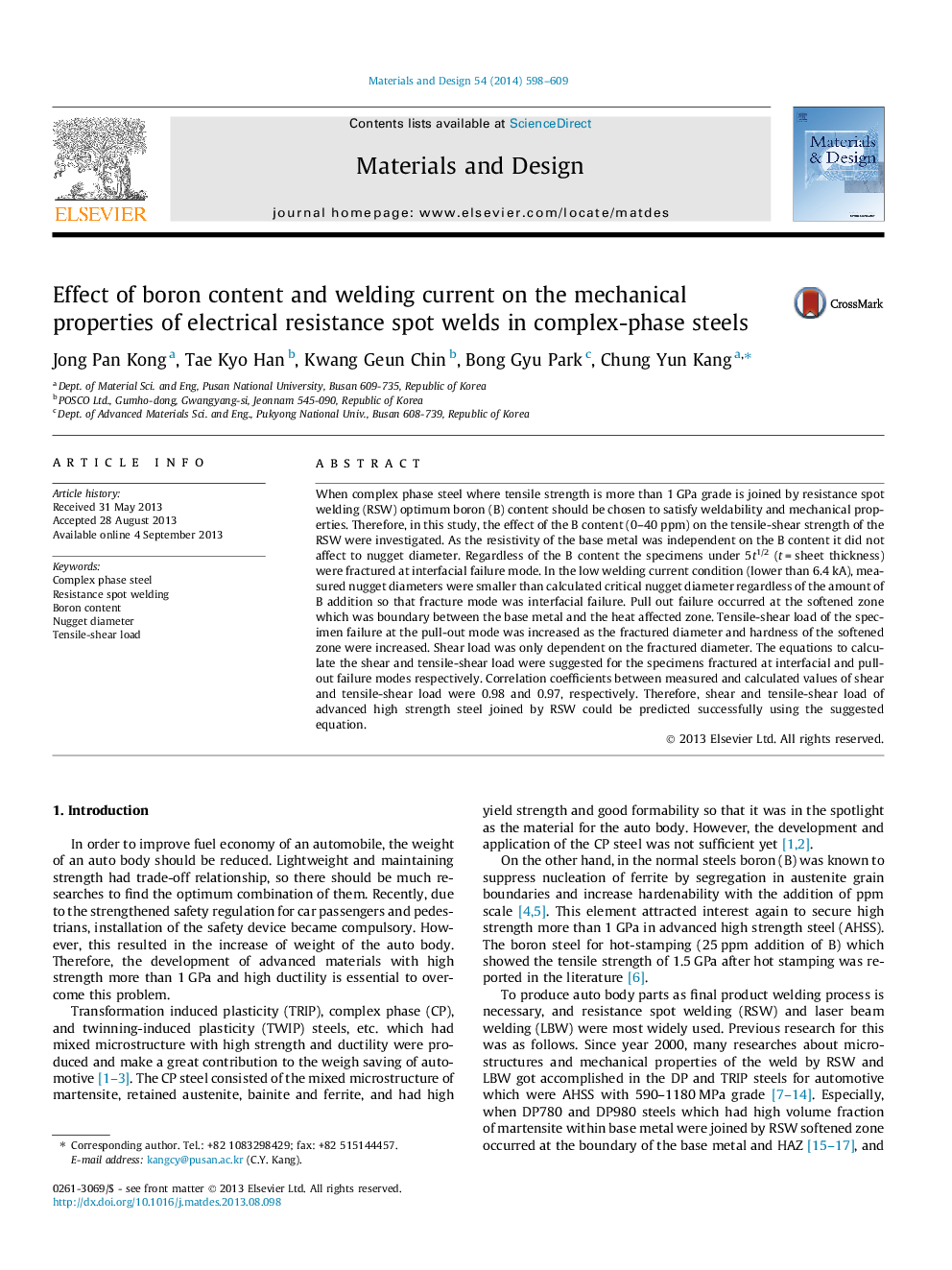| کد مقاله | کد نشریه | سال انتشار | مقاله انگلیسی | نسخه تمام متن |
|---|---|---|---|---|
| 829679 | 1470343 | 2014 | 12 صفحه PDF | دانلود رایگان |
• Effects of the B contents on the peak load of the RSW in CP steels were examined.
• The ND increased with increasing current regardless of the B contents.
• Load in PF mode was affected by both the min. hardness and fractured diameter.
• Load in IF mode was dependent only on the fractured diameter.
• ND < 5t1/2 resulted in IF mode regardless of the B contents.
When complex phase steel where tensile strength is more than 1 GPa grade is joined by resistance spot welding (RSW) optimum boron (B) content should be chosen to satisfy weldability and mechanical properties. Therefore, in this study, the effect of the B content (0–40 ppm) on the tensile-shear strength of the RSW were investigated. As the resistivity of the base metal was independent on the B content it did not affect to nugget diameter. Regardless of the B content the specimens under 5t1/2 (t = sheet thickness) were fractured at interfacial failure mode. In the low welding current condition (lower than 6.4 kA), measured nugget diameters were smaller than calculated critical nugget diameter regardless of the amount of B addition so that fracture mode was interfacial failure. Pull out failure occurred at the softened zone which was boundary between the base metal and the heat affected zone. Tensile-shear load of the specimen failure at the pull-out mode was increased as the fractured diameter and hardness of the softened zone were increased. Shear load was only dependent on the fractured diameter. The equations to calculate the shear and tensile-shear load were suggested for the specimens fractured at interfacial and pull-out failure modes respectively. Correlation coefficients between measured and calculated values of shear and tensile-shear load were 0.98 and 0.97, respectively. Therefore, shear and tensile-shear load of advanced high strength steel joined by RSW could be predicted successfully using the suggested equation.
Journal: Materials & Design (1980-2015) - Volume 54, February 2014, Pages 598–609
